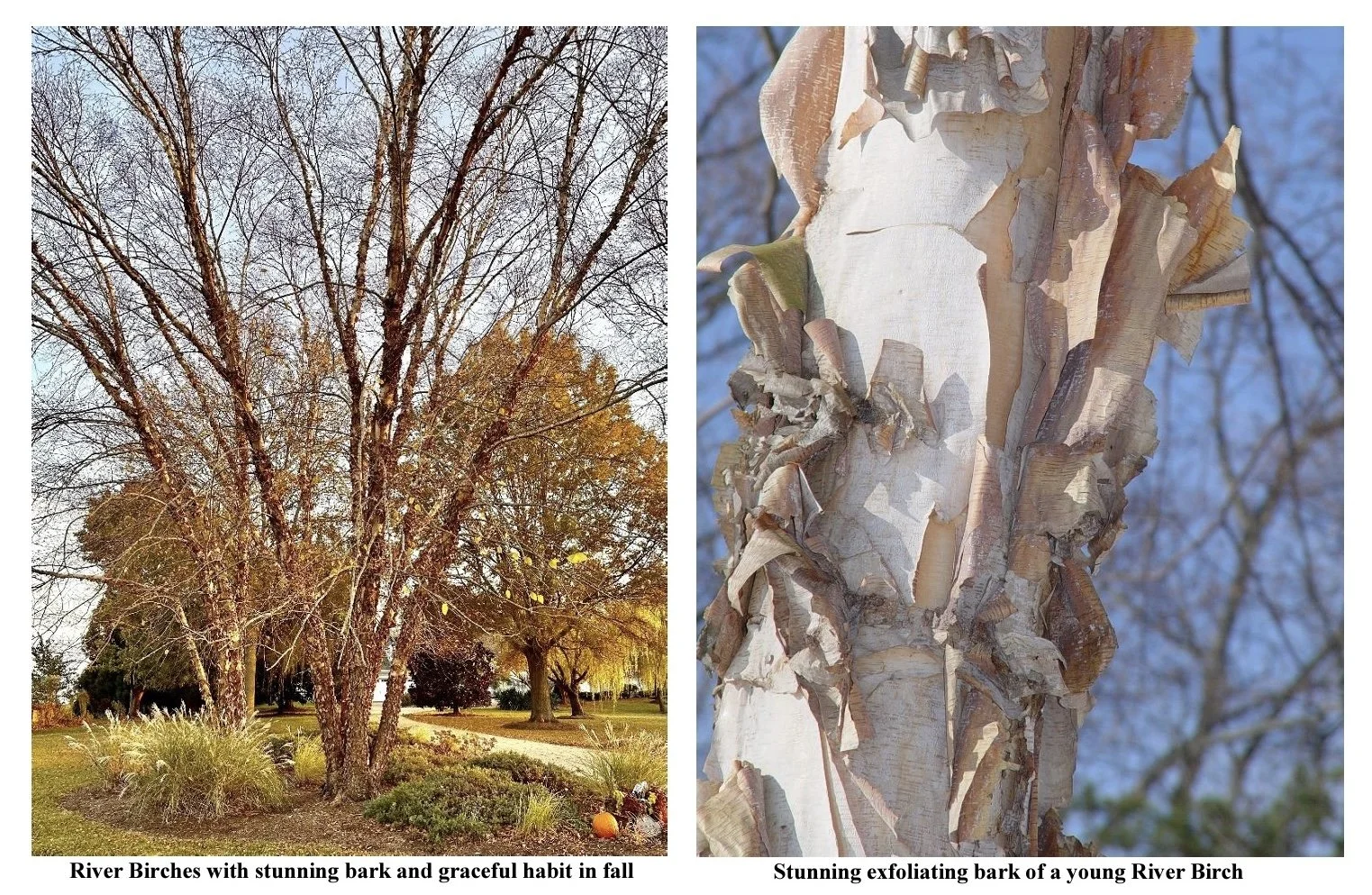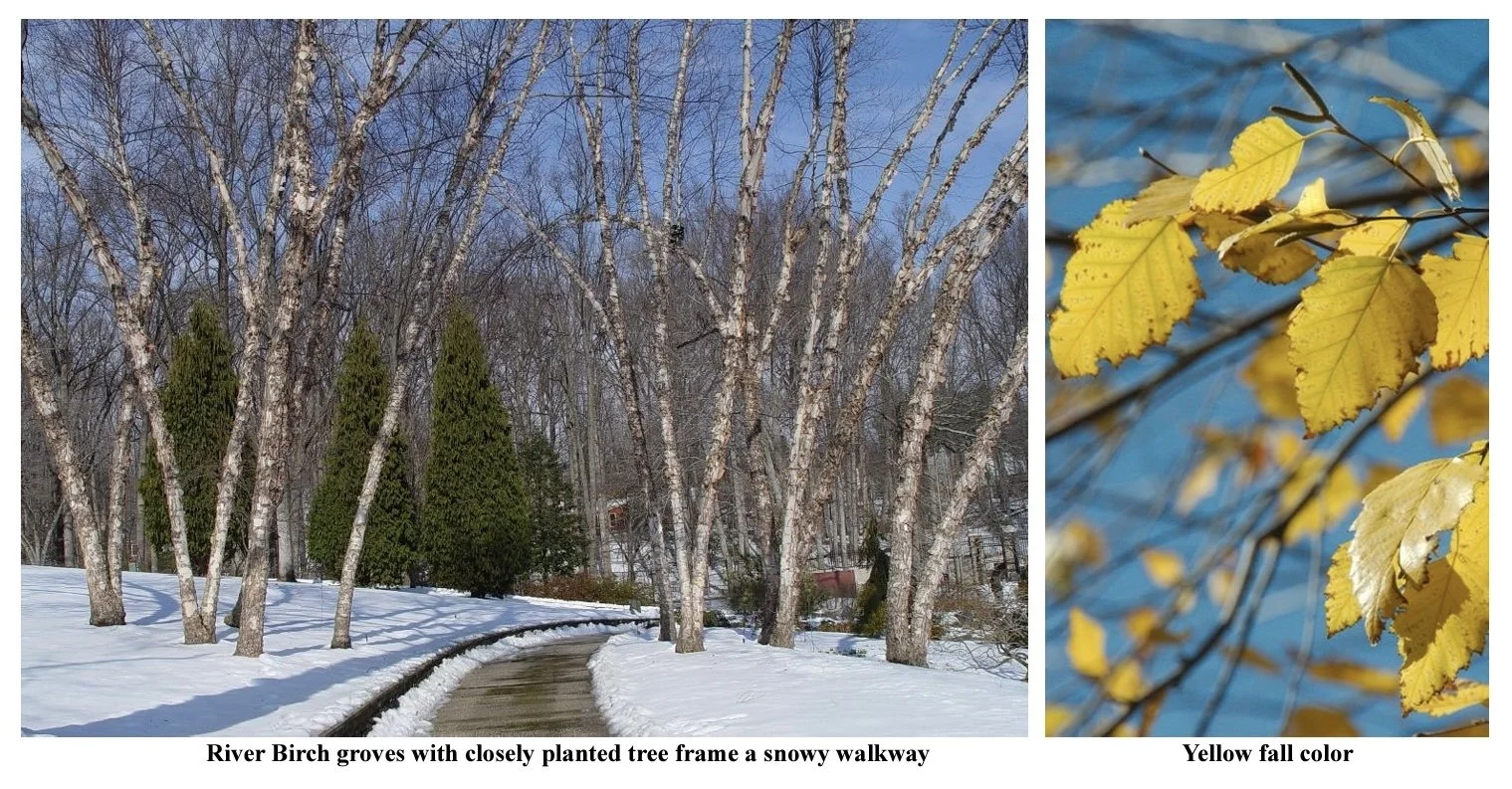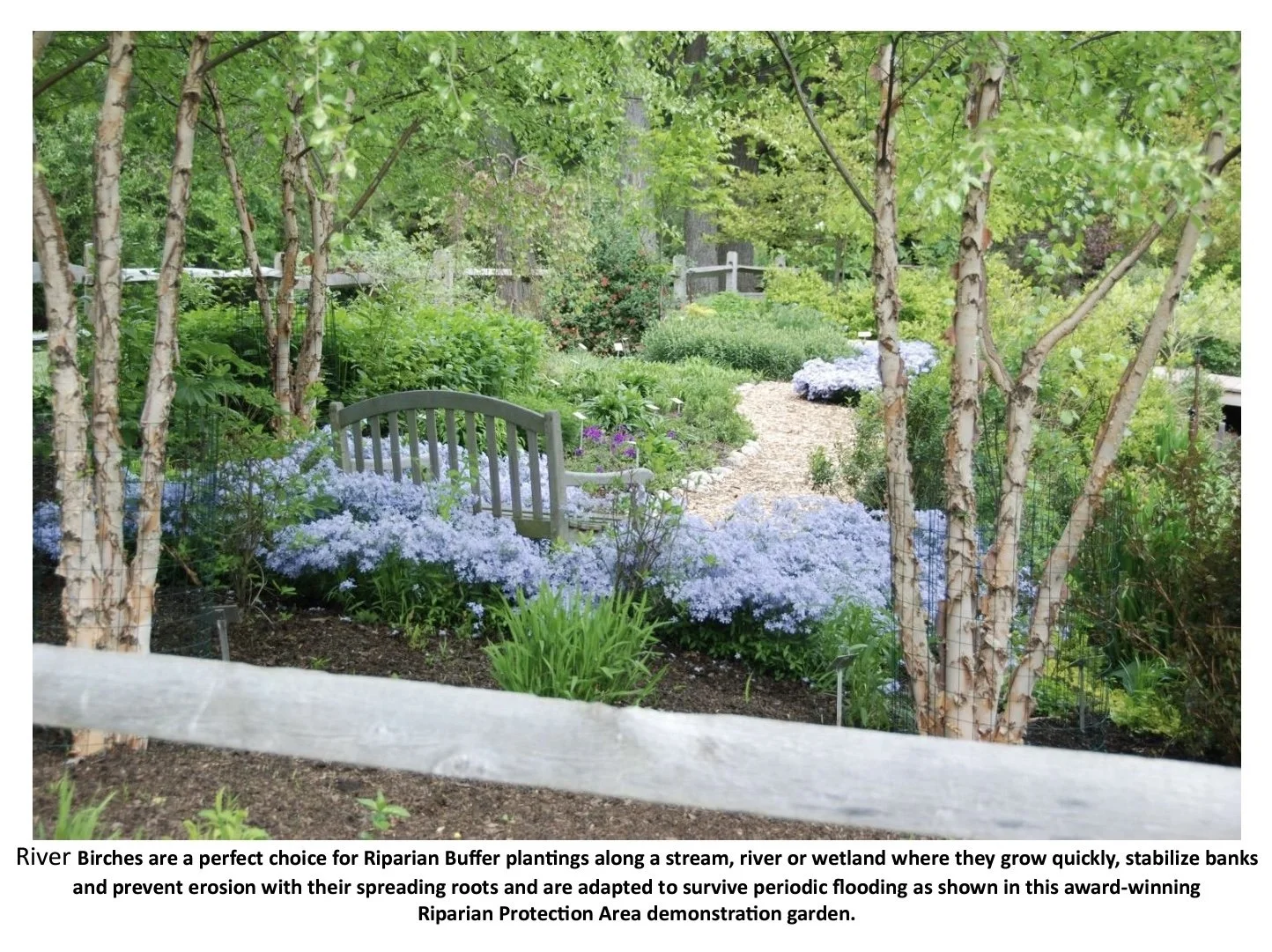Plant of the Month December 2023: River Birch
Northern Neck Chapter of the Virginia Native Plant Society
December Plant of the Month
River Birch, Betula nigra
by Betsy Washington
As I write this in early December, most of the fall leaves have fallen from our deciduous trees and their architecture and bark has taken center stage helping to brighten the landscape. Birch trees are known for their colorful bark and our River Birch, Betula nigra, is no exception with its exquisite pale pink to salmon exfoliating bark making it one of our most stunning and picturesque trees. Unlike most birches of our northern latitudes, River Birches are native throughout Eastern North America from Massachusetts west to Minnesota extending south to Florida and Texas. They are well adapted to the heat and humidity of the Southeast making them the perfect landscape Birch for our area. In Virginia, River Birches are common in the Coastal Plain and Piedmont but infrequent in the mountains. This adaptability to our heat brings extreme resistance to the devastating Bronze Birch Borer which plagues the white barked and exotic birches adapted to cooler regions and high elevations. River Birches by contrast predominate in low areas with damp to wet soils along stream and riverbanks and floodplains and readily colonize flood-scoured cobble beaches or stream banks where they tolerate periodic flooding.
River Birches may not have the beloved white bark of some of our northern species, but they shine in their own right with warm buff to light pinkish to warm salmon bark that exfoliates in large curling sheets to reveal lighter inner bark – stunning in every season but particularly striking in winter. Although the bark can be variable in color, it is always remarkable. On very old specimens the bark becomes dark and scaly. River birches are medium-sized deciduous trees, typically growing quickly to 40 - 70’ or more in height. They have a light airy rounded canopy, typically about 20–50-foot wide, allowing perennials to grow beneath. In nature, they usually grow with a single trunk but are often found in the landscape industry as multi-trunked specimens with gently arching upright trunks and graceful, fine-textured, gently weeping branch tips.
The handsome dark to medium green summer leaves are diamond-shaped with serrate margins and in fall often turn a lovely yellow-gold. River Birches are monoecious meaning that they have separate female and male flowers on the same tree which are wind pollinated. Male flowers or catkins, as they are called, dangle in drooping clusters at the tips of branches, rapidly elongating in spring before releasing their pollen while female flowers are held in small upright cones which shatter and disperse their 3-pronged seeds in later in spring.
River Birches, like all birches, have exceptionally high wildlife value. In fact, Doug Tallamy, author of Bringing Nature Home, ranks River Birches as one of the top five wildlife-supporting trees. They host over 400 species of moth and butterfly caterpillars which are critical baby songbird food. Some of the showy moths and butterflies supported by River Birches include Mourning Cloaks, White Admirals, Viceroys and the extremely showy and large Cecropia or Silk moth. Many overwintering and spring birds depend on the buds and seeds of River Birches including nuthatches, kinglets, chickadees, juncos, pine siskins, grosbeaks and tanagers, as well as many small mammals. In winter, Yellow-bellied sapsucker woodpeckers drill sap wells into the bark to reach the copious sap of birches while other woodpeckers and songbirds find insects hidden in the exfoliating bark. In fact, Audubon of North Carolina states, “If you have space to plant just one tree to feed your birds, you can’t go wrong with the River Birch. It’s a rockstar among bird-friendly native plants”.
River Birches are easy to grow with relatively few problems. Growing best in full sun or light shade, they naturally grow in moist or even wet, acidic soils but are quite tolerant of dry soils and drought once established. They are sometimes considered “messy” trees because they “self-prune” by dropping twigs and leaves during periods of drought and the exfoliating bark peels off in strips, however planting a living mulch of native groundcovers or low shrubs below helps alleviate any need for clean-up. They can also lose larger limbs in ice storms but careful pruning of weak or crossing branches can help. Birches are best pruned in late summer, fall or winter when they can be carefully limbed up to show off their gorgeous bark.
River Birches are a perfect choice for a four-season specimen tree in any landscape but are equally lovely when planted in small groups or alternating along a path or entrance where they can be planted relatively close together as they often grow in nature. Or plant them along a stream, pond, or other low area where their strong, spreading roots can hold the soil and stabilize banks preventing erosion and runoff while their picturesque branches arch out over the water. River Birches grow quickly, shrug off heat, humidity, and pests, and can reach canopy heights in just a few years. Although short-lived compared to our magnificent oaks which can live for several hundred years, River Birches typically live for 50 – 150 years or more, especially in moist soils. But still the River Birch provides quite a legacy of beauty, shade, and wildlife value during our own tenure on Earth as well as for our children. Not to mention the wildlife they support. What’s not to love?



